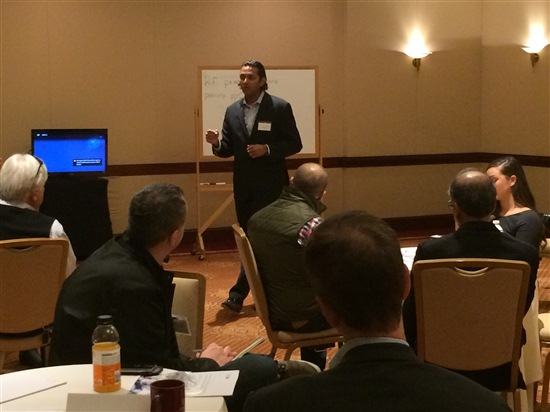Earlier this month, Dell’s enterprise business executive leadership team hosted top media at an event in the Bay Area. The event was designed to give reporters context for Dell’s innovations this year and thoughts about trends we’ll address in the future to help customers build a Future-Ready Enterprise that meets today’s business needs and quickly responds to industry shifts. At the event, executives met individually with influencers to provide insights on how Dell technology helps customers drive growth and competitive differentiation and how their success, or failure, ties directly to the effectiveness of their IT environment.
We also shared key findings from the 2nd Annual Dell Global Technology Adoption Index (GTAI) as well as IDC’s Future Ready Enterprise Index.
According to the GTAI findings, a “future-ready” organization is one that is always extending the abilities of its IT infrastructure and applications while putting into place IT organizational practices that enable it to identify and address changing business and technology needs. The study revealed that organizations investing in big data, cloud and mobility experience a much higher growth rate than those that don’t. Also, it noted that mobility and cloud adoption propelled organizational efficiency, while security and big data initiatives are tied to organizational growth goals.
The research with IDC quantified the extent to which future readiness mattered in today’s digital business world. It identified four levels of enterprise future readiness, based on their ability to react quickly to business changes and their adoption to innovative technology: Future Creators, Future Focused, Future Aware and Current Focused.
The new Future Ready Index reveals the four key investment areas that speed the journey to a more successful future ready end state:
- Converged infrastructure – enables simpler, more efficient and more scalable IT infrastructure within an organization’s own datacenter.
- Cloud – provides greater agility, flexibility and data control at the application level and the business level, improving productivity and enabling resource-intensive applications, no matter where they are.
- Big data and analytics (BDA) – enables better and faster business decisions by getting the right data to executives, frontline employees, and (increasingly) customers at the right time. The most advanced organizations also use BDA to automate critical business functions for improved accuracy and efficiency.
- Future-minded IT organizational practices – the foundation that ensures the sustained effectiveness of investments in the other three areas.
The most important finding from this study is that future readiness is an ongoing journey – no matter where one’s organization is today, and taking the next step will deliver significant and immediate IT and business benefits. Organizations’ future-ready efforts can also deliver major benefits even if the organizations’ focus is only on improving whichever specific aspects of their IT infrastructure (converged, cloud, BDA) are most important for their needs today. Regardless of the level or scope of focus on the three technology aspects, an effective IT organization that can work closely with lines of business (LOBs) is critical to becoming a truly future-ready enterprise.
Findings from the GTAI and IDC’s Future Ready Index offer valuable insight for our customers and enable them to determine where they are on their journey. The better we understand how our customers are reacting to market dynamics and how they are adjusting to the many technology shifts taking place in the market today, the better counsel we are able to provide as their strategic partner.
We had a great day in the Bay Area and hope to engage with our key influencers on the east coast soon.
